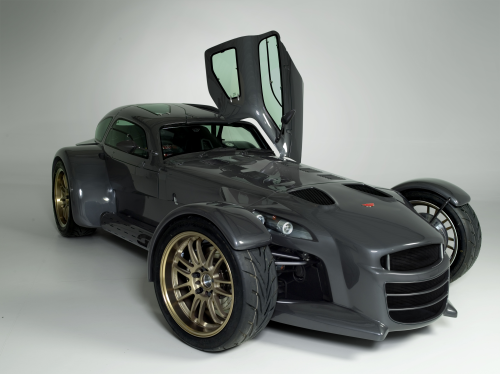
The ‘Donkervoort’ is widely regarded as the ultimate package for the real car enthusiast. Both ultra-light and incredibly powerful it offers the road-holding characteristics of a racing car.
ACG’s Variable Temperature Moulding ®260 (VTM) series, vacuum-only curing prepreg, and BPS240 Car Body Panel System are used extensively across the new 2010 race car. Development of the chassis and bodywork has found additional applications for ACG’s materials. Body parts, including the roof, mudguards and underbody panel, together with structural elements, including the rear chassis and the combined scuttle and windscreen framework, are all benefiting from a combination of improved stiffness and weight reduction.
The high surface quality of the prepreg moulded components minimises surface reworking. In many cases, the parts do not require painting, further reducing the overall weight of the car. For exterior panels on both the race car and the road version of the D8, ACG’s BPS240 Body Panel System is proving so effective that it is essentially paint-ready direct from the mould.
The production process has also been streamlined as the company migrates away from the original pressed metal panelling and wet lay-up of polyester and glass to the manufacture of the cleaner, safer and cost-effective processing route obtainable through the application of ACG prepregs.
ACG’s technical team has assisted Donkervoort throughout the development process, with onsite support and manufacturing advice. In particular, the combined scuttle and wind framework, which is manufactured in a single process using just vacuum for consolidation. Personnel from ACG’s R&D and Applied Technologies departments provided guidance on the tooling and manufacture of this complex shape using a variety of carbon, glass and Kevlar in both unidirectional and fabric formats. The result was a structure that passed strict FIA testing with flying colours.





